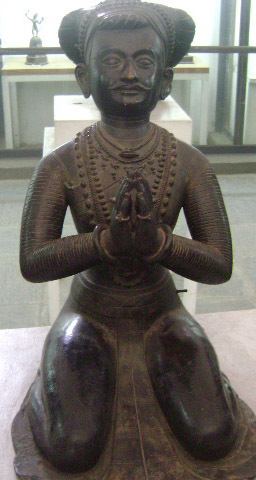 | ||
Sculpture is the art of making objects of different shapes, sizes & features in glass, metal, stone, wood, or clay. Along with painting, sculpture is connected to religious traditions and practices in Nepal. There is a long tradition in Nepal of making statues or sculptures of different deities from metal or stone. Sculpture has developed during the country's history.
Contents
A sculpture of Baman Tribikram erected by Lichchhavi king Man Dev is considered to be the oldest sculpture in Nepal. Sculptures that were created during the Lichchhavi period include ones of Palanchowk Bhagawati, Budhanilkantha, etc. The art of sculptures started in the Lichchhavi period of time and reached at the top during the Malla period of time. In fact, Malla period is known as the golden period for sculpture history. The statues inside Changu Narayan Temple and around it, statue of Palanchowk Bhagawati, statue of Budhanilkantha are few examples of sculptures made during the Lichchhavi period of time.
Malla Period
The Malla period is considered to be the high period of Nepali sculpture. Works of Ganesha, Shiva, Vishnu, Surya, Laxmi, Saraswati, Gautama Buddha, etc. were created during this period. Other idols of kings and gods were also common pieces. Advancements in technique included the development of molding, the sculpting of clothing ornaments, and themes based on Tantric thought and practice.
Lichchhavi period
During the Lichchhavi period of time, (AD 330-879) Nepalese sculpture has reached its zenith. As, sculptures at this period most often used basalt for their work, first chiseling & then smoothing & varnishing, with iron dust.
